Jasper Lake Fanless Showdown: ECS LIVA Z3 and ZOTAC ZBOX CI331 nano UCFF PCs Review
by Ganesh T S on July 8, 2022 8:30 AM EST- Posted in
- Systems
- ZOTAC
- Fanless
- ECS
- Passive Cooling
- UCFF
- Mini-PC
- Jasper Lake
Power Consumption and Thermal Characteristics
The power consumption at the wall was measured with a 4K display being driven through the HDMI port of the system. In the graph below, we compare the idle and load power of the ECS LIVA Z3 with other systems evaluated before. For load power consumption, we ran the AIDA64 System Stability Test with various stress components, as well as our custom stress test with Prime95 / Furmark, and noted the peak as well as idling power consumption at the wall.
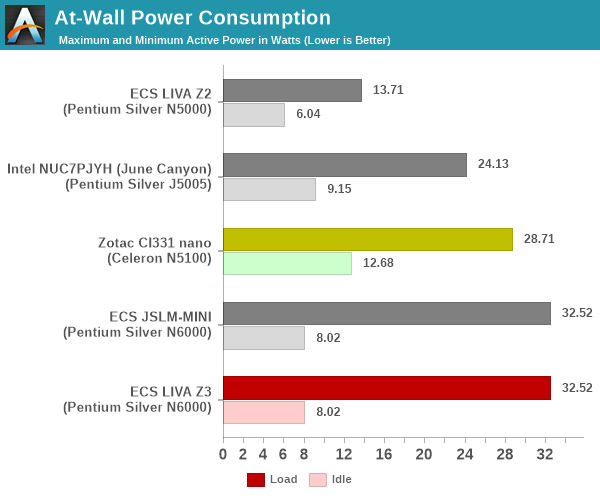
The Jasper Lake units are at the wrong end of the graph in both load and idle power numbers. ECS has set a 6W PL1 and 20W PL2 for the processor. A load power number of around 32W doesn't come as a surprise in that case - given that the system also includes a Crucial P5 NVMe drive. The CI331 nano, on the other hand, has a 7W PL1 and 20W PL2. The use of a SATA drive as the primary storage and the absence of a secondary eMMC package on board allow its load numbers to come in lower at around 29W. The high idling number (12+ W) is due to the inclusion of 64GB of DDR-2933 DRAM (compared to the 8GB of DDR4-2666 in the ECS LIVA Z3 / JSLM-MINI).
Stress Testing
Our first thermal stress routine starts with the system at idle, followed by four stages of different system loading profiles using the AIDA64 System Stability Test (each of 30 minutes duration). In the first stage, we stress the CPU, caches and RAM. In the second stage, we add the GPU to the above list. In the third stage, we stress the GPU standalone. In the final stage, we stress all the system components (including the disks). Beyond this, we leave the unit idle in order to determine how quickly the various temperatures in the system can come back to normal idling range. Traditionally, this test used to record the clock frequencies - however, with the increasing number of cores in modern processors and fine-grained clock control, frequency information makes the graphs cluttered and doesn't contribute much to understanding the thermal performance of the system. The focus is now on the power consumption and temperature profiles to determine if throttling is in play.
The first set of graphs below is for the ECS LIVA Z3. After a brief PL2 start, the package power settles down to around 6W for the first stage in the AIDA64 SST. However, after some time into the second stage, we see that the number is no longer steady and oscillates wildly between 4.8W and 6W, tending towards the former. The at-wall numbers follow a similar track until the SSD stress segment, which causes a uniform shift upwards.
The reason for the power consumption behavior is evident from the temperatures plotted above. Around the time the second stage starts,the package temperature has already reached around 105C. This kicks in the thermal throttling. The Crucial P5 SSD temperature also kicks up as high as 95C during the SSD stress segment, though a lower power PCIe 3.0 x2 NVMe SSD like the WD SN550 would have probably run slightly cooler. Overall, the LIVA Z3's thermal characteristics under stress are very disappointing. Given the analysis in the thermal design section, these results are not surprising.
The behavior of the system under Prime95 and Furmark is not that different, though the junction temperature is hit only towards the end of the third stage. The drop down in package power is seen only around the 85 minute mark.
Given the rather unsatisfactory results with the LIVA Z3, and suspecting the lack of ventilation in the top of the chassis for convective cooling, we repeated the same set of tests with the ECS JSLM-MINI. With the suffocating top panel out of the picture, there is a significant difference in the thermal characteristics of the machine. The package power consumption number is rock steady at 6W (except for the PL2 spikes as the loads change) throughout the four stages.
The temperatures graphed above are also largely below 80C. This changed behavior is also observed in our custom stress test using Prime95 and Furmark.
The package temperature with the test on the bare board lies south of 80C throughout the artificial power virus test. These graphs prove beyond any doubt that the lack of ventilation slots in the top panel of the LIVA Z3's chassis are to blame for the thermal throttling of the system.
Moving on to the ZOTAC ZBOX CI331 nano, we find proactive throttling getting implemented. A look at our previous ZOTAC fanless system reviews reveal that the ZBOX CI523 nano was the last one we reviewed with a similar chassis / thermal design. In that review, we had analyzed the BIOS update that brought in the proactive throttling feature. That design activated throttling for the 15W package power as soon as 80C was hit. We found that the design could handle a 12W sustained package power. We see a similar approach here - while the junction temperature of the Celeron N5100 is 105C, ZOTAC starts to take preventive measures at a lower package temperature. The disappointing aspect here seems to be the dropping down of the sustained package power to around 3W after the temperature is hit. However, the system keeps regularly trying to ramp back up to the PL1 limit of 7W. This thermal throttling causes performance loss, but doesn't appear to be as sever as the LIVA Z3's (based on the benchmark numbers presented in the previous sections).
The Prime95 + Furmark test exhibits similar behavior for the package power and temperatures.
Overall, the inability of the ZBOX CI331 nano to sustain 7W package power over an extended duration was surprising and disappointing, given that a similar thermal solution had appeared good enough for 12W in an earlier generation.
Thermal Performance
One of the key aspects of fanless systems is the external thermal profile under load. Our stress test saw the internal package temperature go as high as 105C for the LIVA Z3, 88C for the JSLM-MINI, and 85C for the ZBOX CI331 nano. The case temperatures under extreme stress at normal room temperature (25C) was recorded using a FLIR One Pro thermal camera.
The polycarbonate top of the LIVA Z3 doesn't get very hot (slightly south of 60C) because there is no direct contact with the internal thermal module. The metallic segments of the USB ports do get hotter, as shown in the gallery above. We repeated the thermal photography process for the bare board version of the evaluation also.
The thermal module in the ECS JSLM-MINI reaches around 66C under extreme stress (with the internal package temperature around 85C). The exposed nature of the system allows the heat to be dissipated quickly via convective cooling.
The ZBOX chassis is plastic all around, and doesn't conduct the heat from the internal heat sink directly. However, the perforations are made of metal and do get heated up to around 65C under extreme stress.
The gallery above shows the metal segments on the various I/O ports getting much hotter than the perforations / external casing.
The thermal characteristics of both systems leave a lot to be desired. The behavior of the bare board (JSLM-MINI) is encouraging, but that is unfortunately not the way the system would get deployed by end consumers.


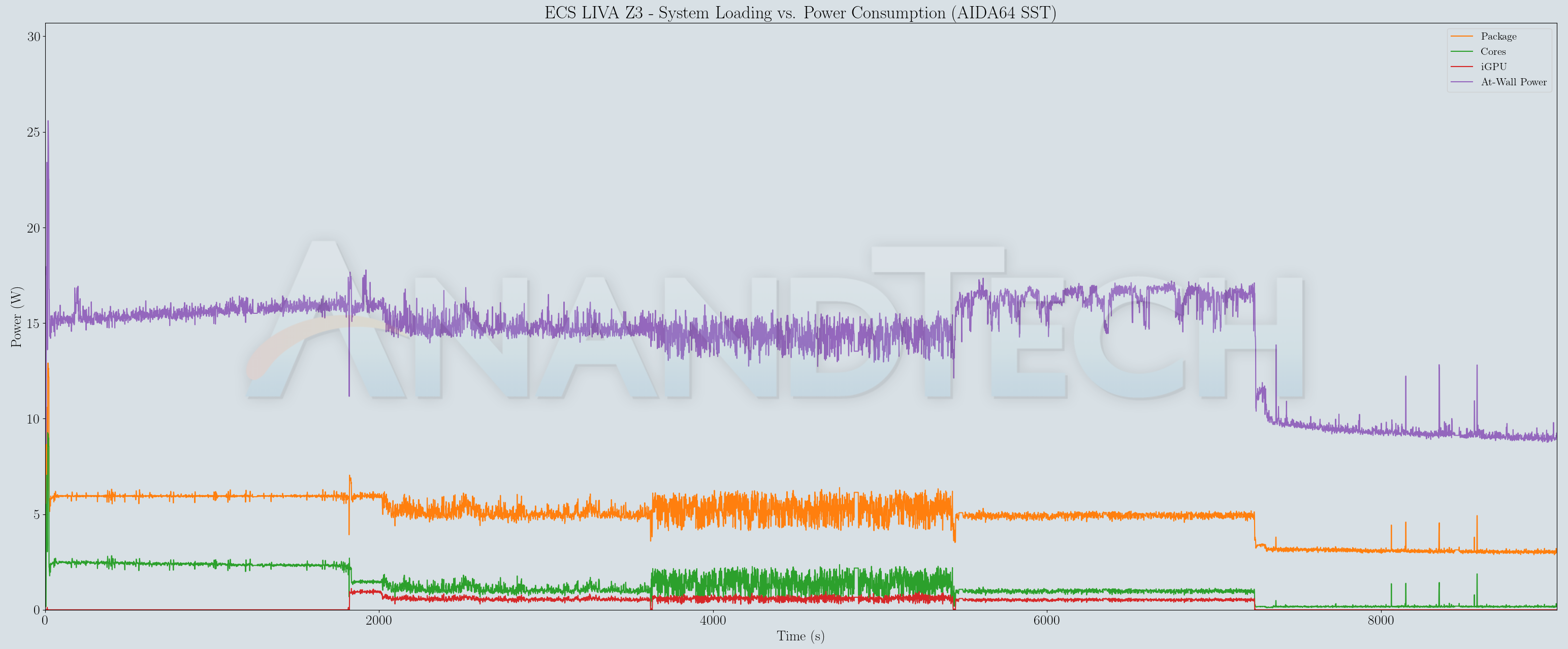
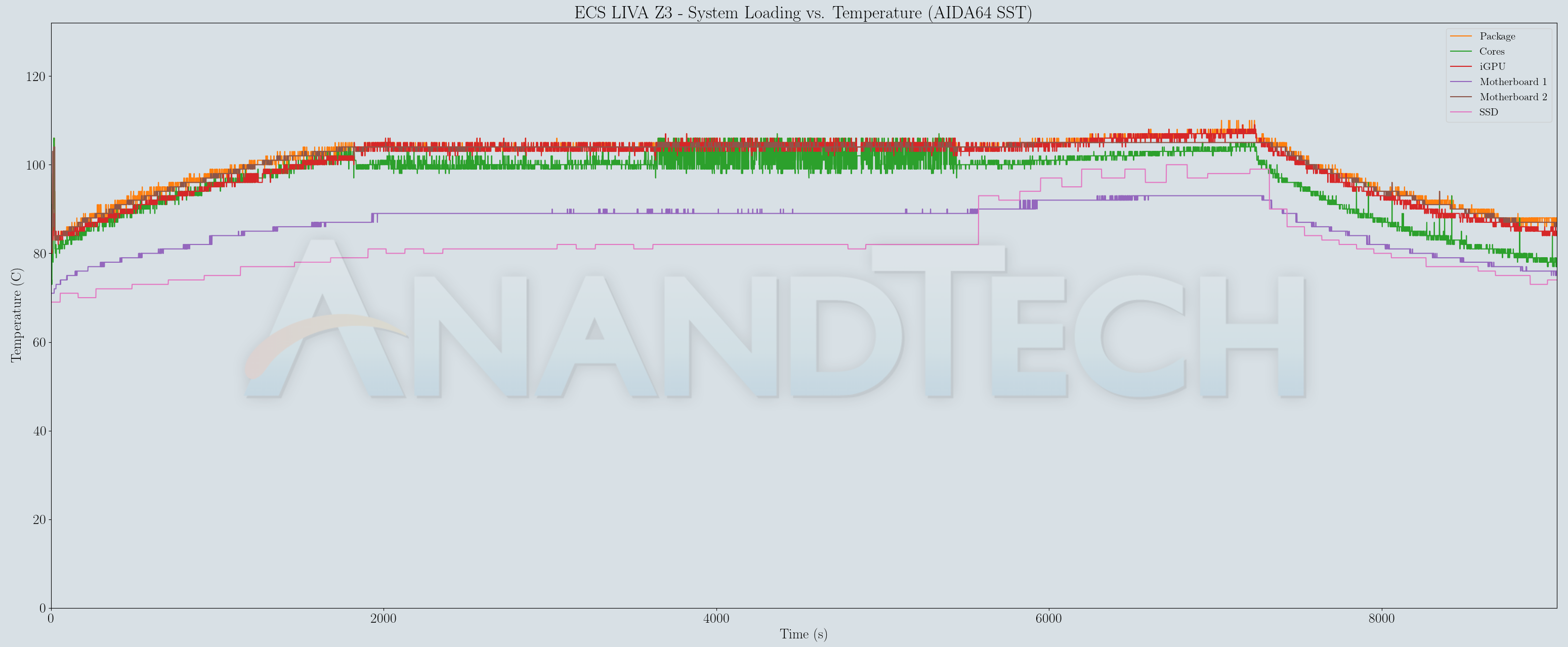
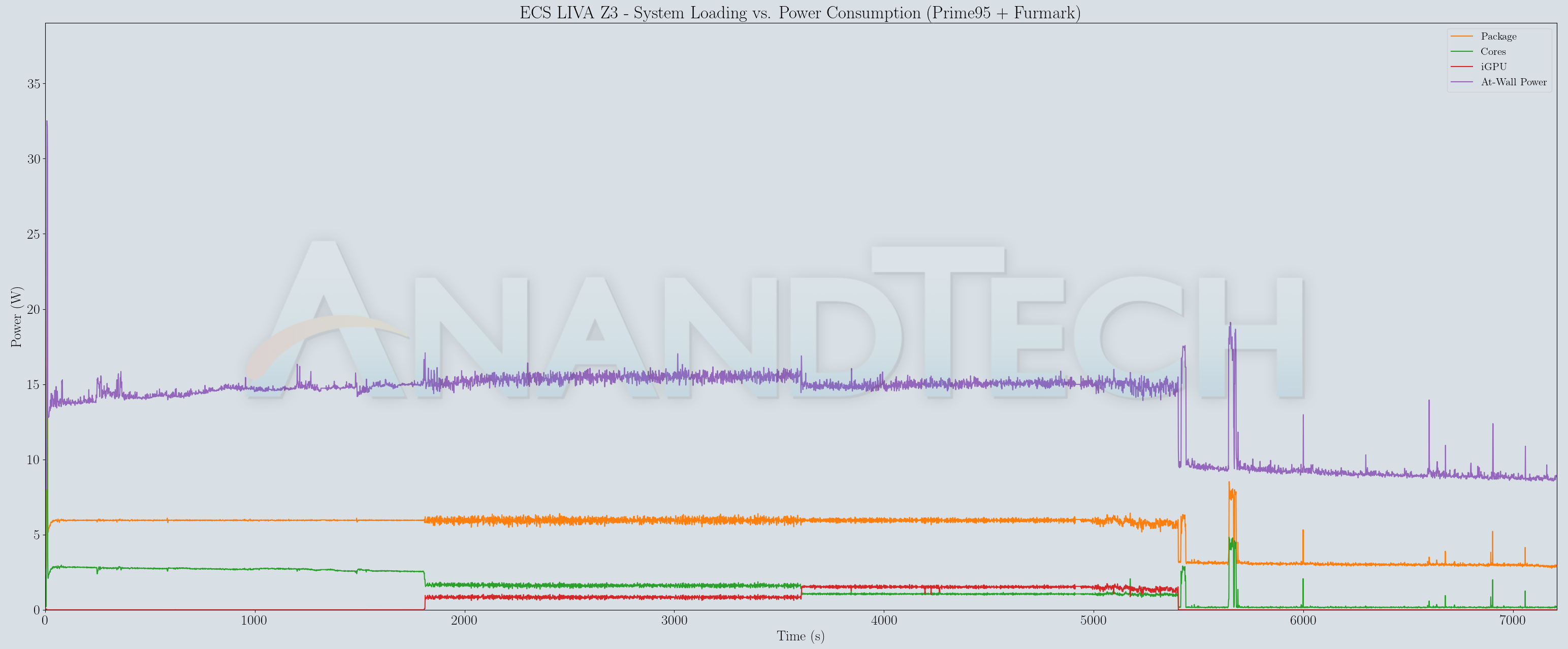
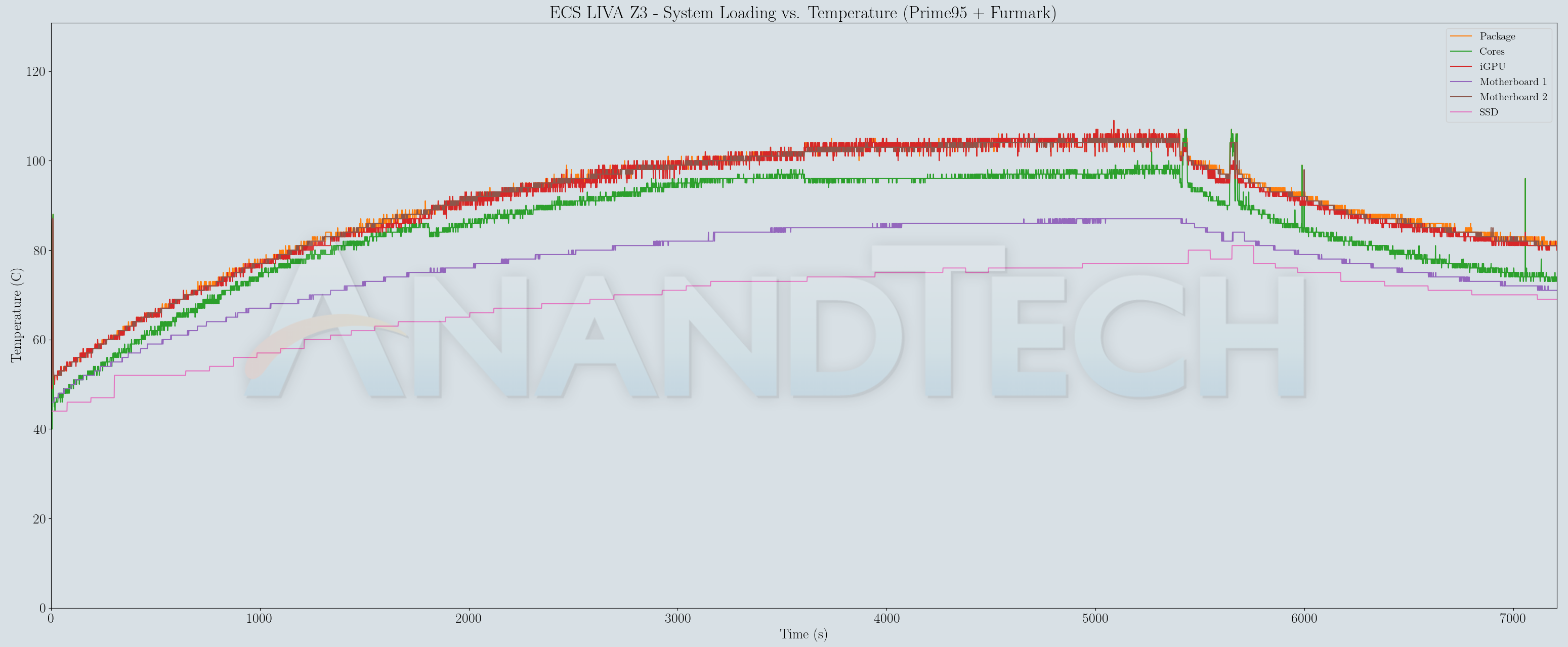
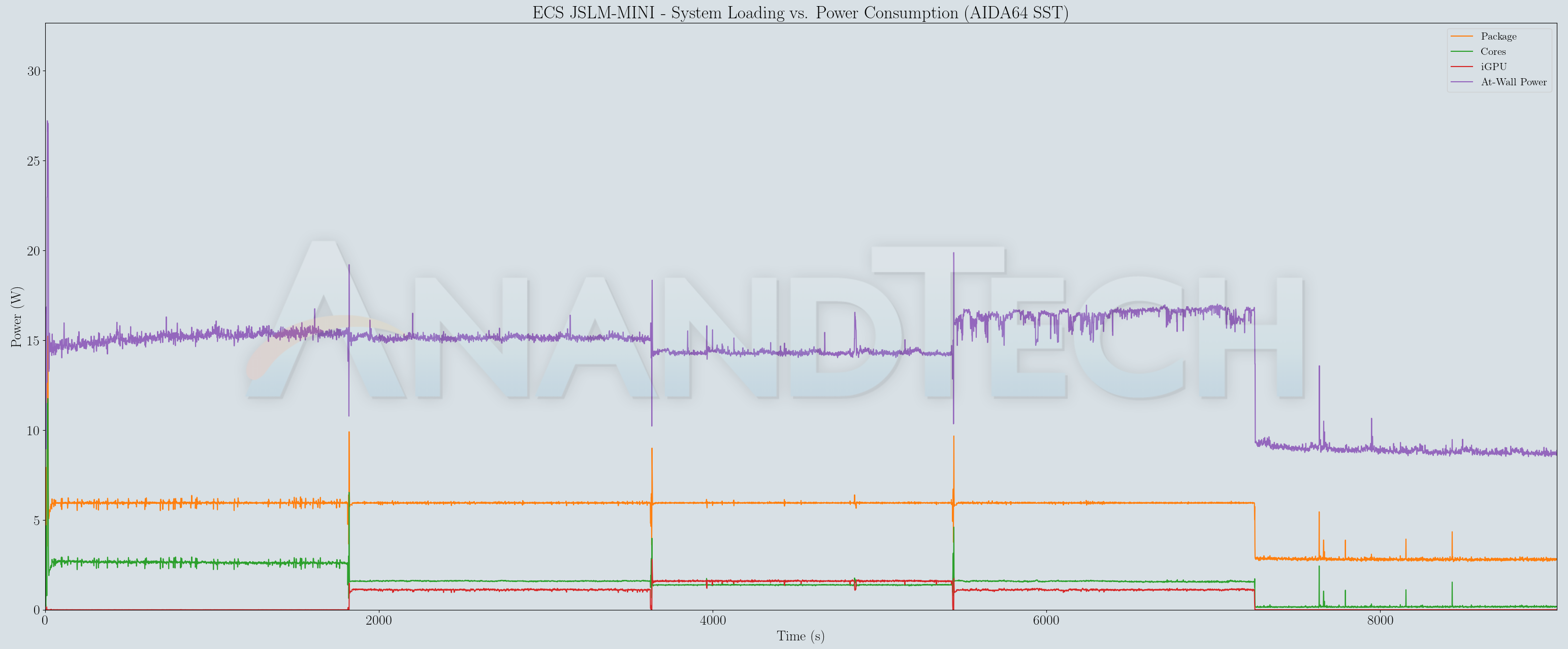
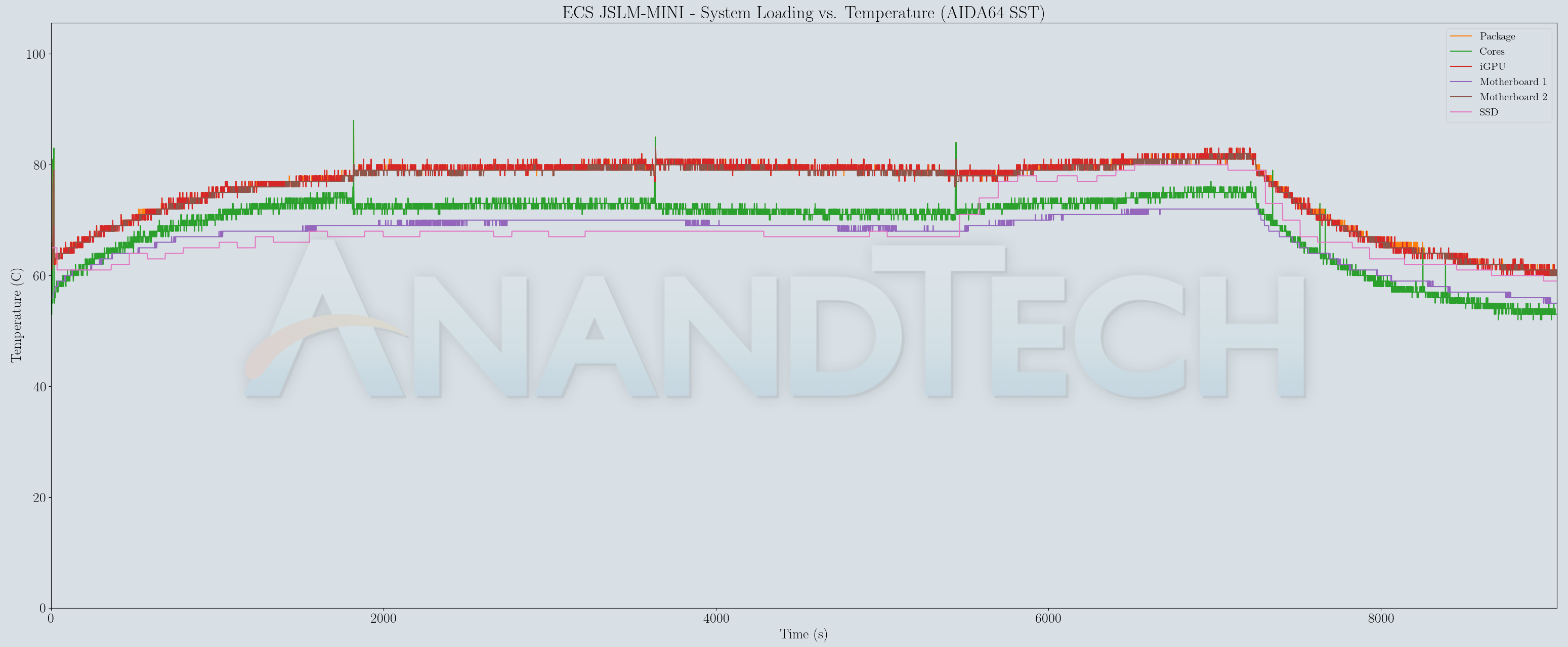
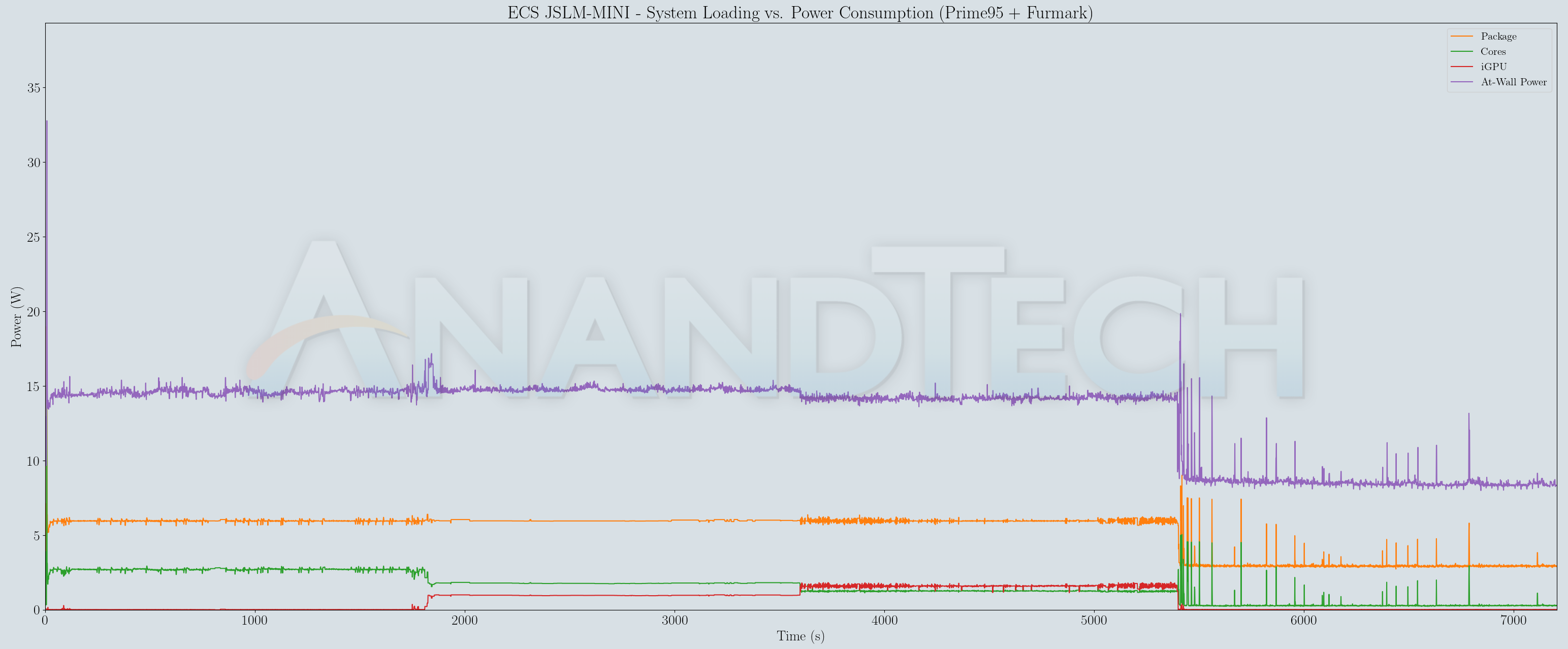
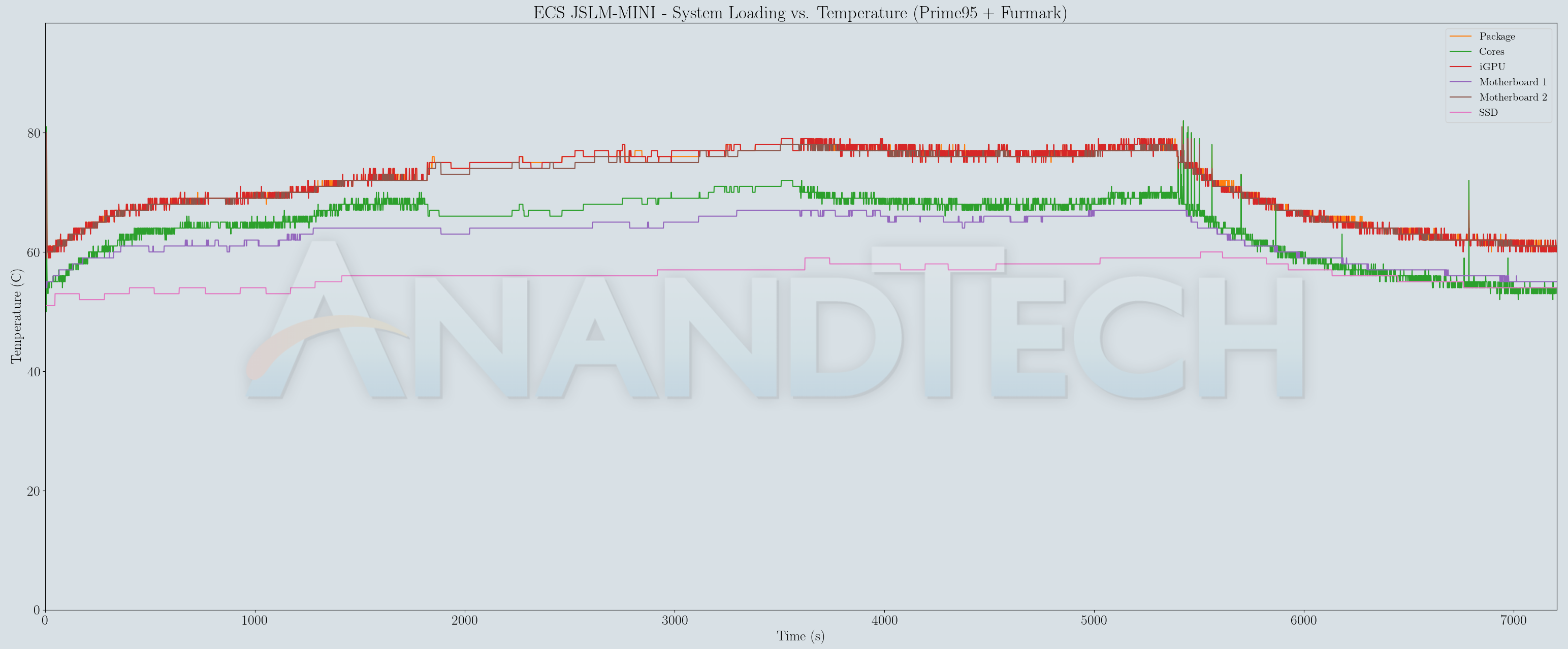
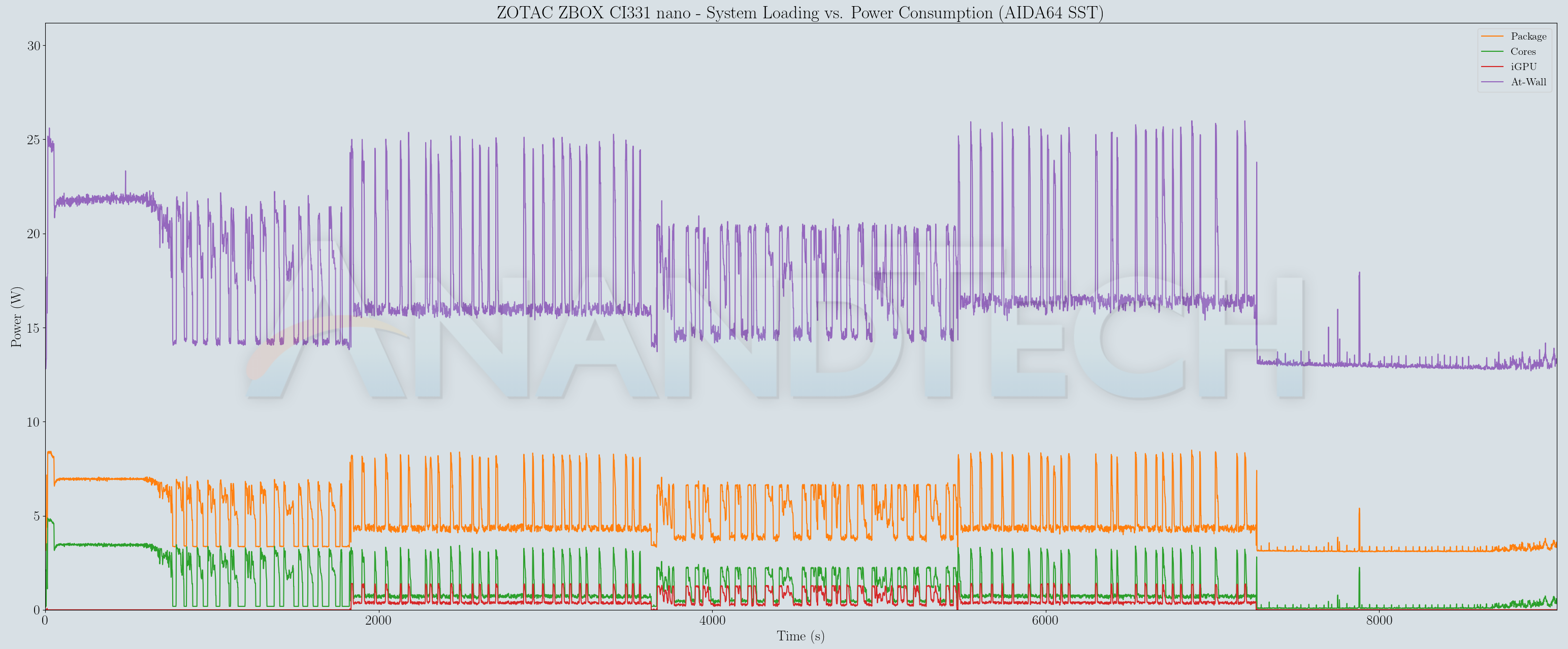
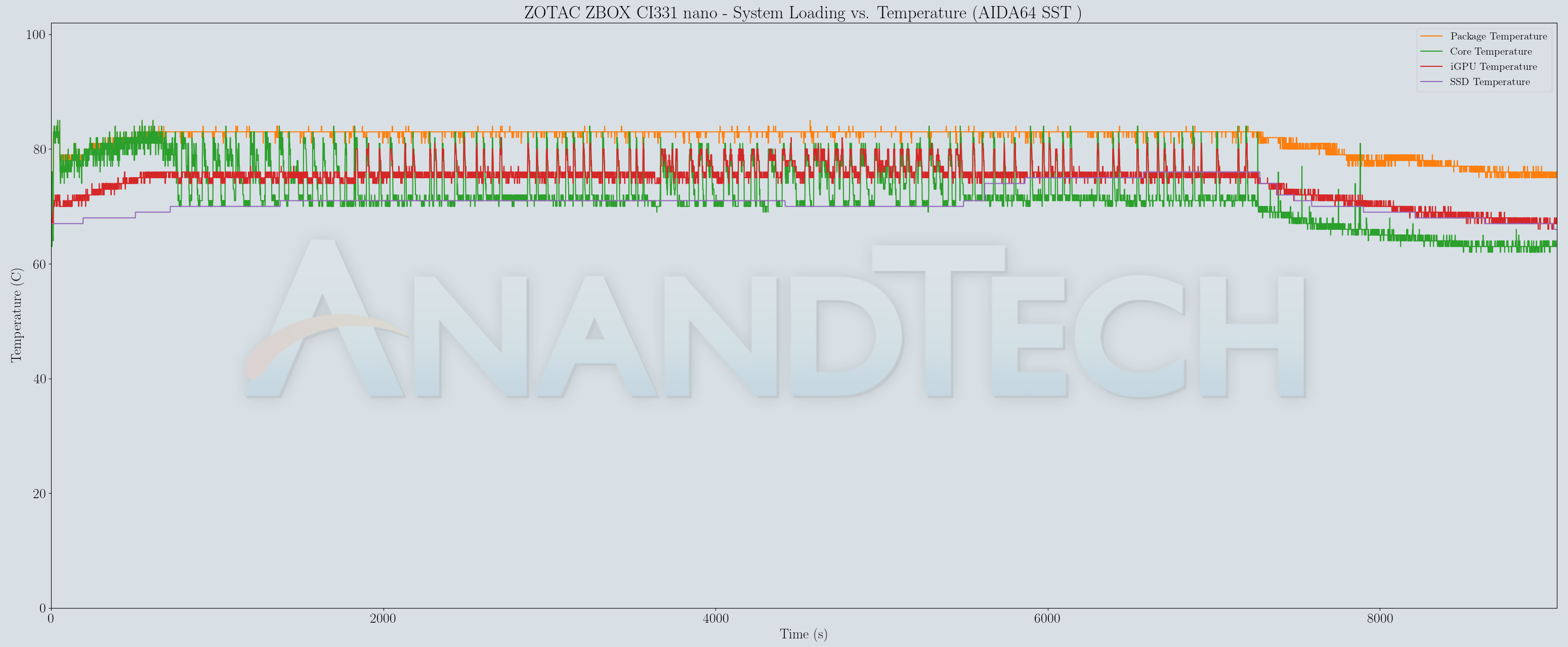

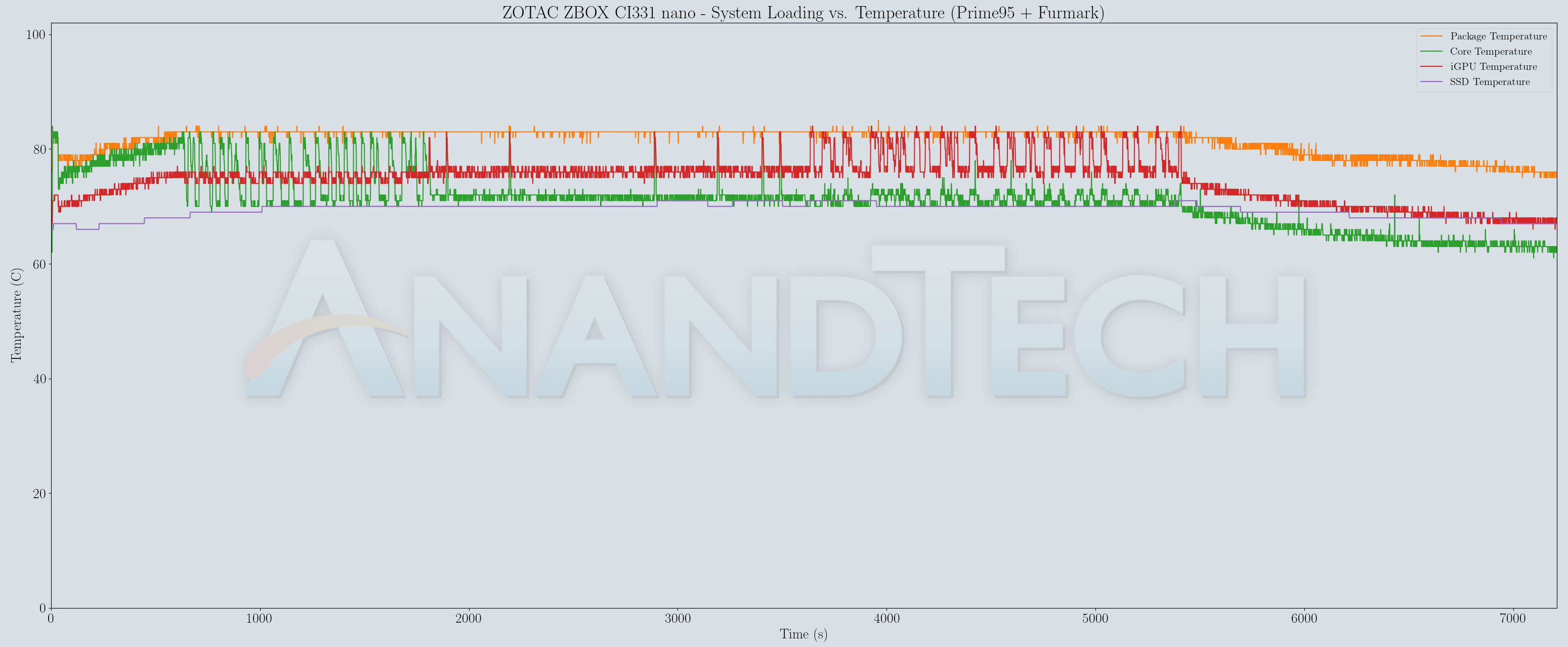
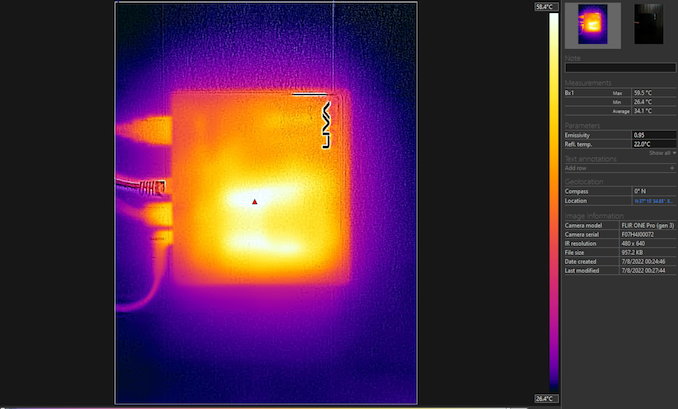






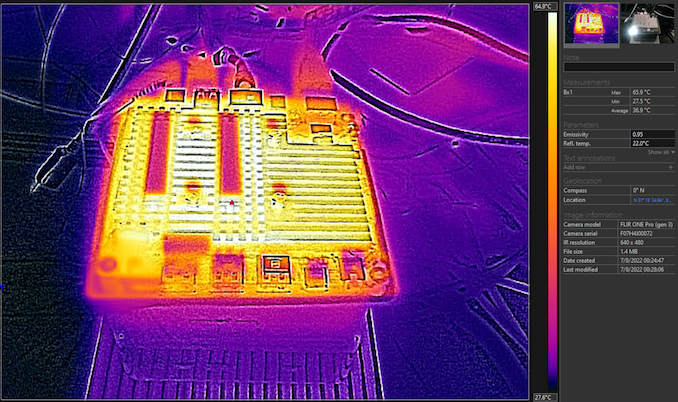




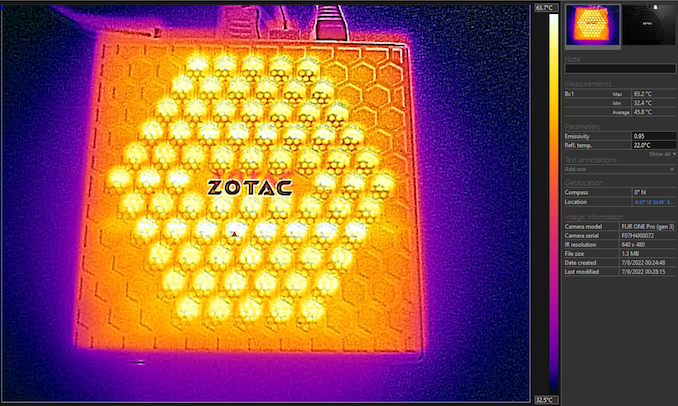














52 Comments
View All Comments
xol - Friday, July 8, 2022 - link
Correction (?)Neither of these reviewed products has a Intel UHD Graphics 605 .. (that's a 14nm Gemini part with 18 EU eg here https://ark.intel.com/content/www/us/en/ark/produc...
.. Intel seems to have not publisher a 'number' for this iGPU and seems to distinguish them by number of EU eg Jasper Lake 24EU eg https://www.intel.co.uk/content/www/uk/en/products...
xol - Friday, July 8, 2022 - link
Somehow messed up the link :UHD 605 https://ark.intel.com/content/www/us/en/ark/produc...
mode_13h - Friday, July 8, 2022 - link
Thanks for your coverage of fanless mini-PCs. However, I really wish you'd include something with "big cores", so we can get a sense of the scale of performance difference between them and Tremont.Another nice-to-have would be at least a few benchmarks including a Raspberry Pi 4. However, it has serious thermal throttling issues, unless it's actively cooled or you use a substantial passive cooling solution.
mode_13h - Friday, July 8, 2022 - link
I guess the ideal comparison would be a Tiger Lake-based system, since that's the same vintage and similar manufacturing tech as Tremont. Probably much harder to find in a fanless mini-PC, unless we're talking about an industrial PC, but I'd love even to see a comparison between two NUCs: Tiger Lake vs. Tremont.mode_13h - Friday, July 8, 2022 - link
Or maybe Ice Lake would be even better, but did they make Ice Lake-based NUCs?abufrejoval - Thursday, July 14, 2022 - link
Yes, Tiger Lake NUCs were made, but also very hard to come by: I have both.In a way they are perfect to showcase the benefit of E/P cores …in the case of Intel: AMD is really another story.
The two NUCs look nearly identical on the outside, but inside they are very different beasts.
For starters: The Tiger Lake NUC11 (i7-1165G7 with 96EU Xe iGPU) is configured with a 64 Watt PL2, a rather long TAU and even the PL2 is 30 Watts by default, I believe. There is a reason it comes with a 90 Watts power brick! I changed PL2 to 50, TAU to 10 seconds and PL1 to 15 Watts to ensure the fan would never howl they way it does with the defaults.
I’ve seen HWinfo report a 5GHz maximum clock, but 4.7GHz is the official top speed. It’s at 64 Watts and near 5GHz clocks that I have measured 1707/5808 Geekbench 4 results on Linux (always a bit faster than on Windows). Jasper Lake doesn’t quite play in the same league at 781/2540 using 3.3 GHz and 10 Watts. In Watts/compute power Tiger Lake looks rather worse than Jasper Lake, but when it comes to rendering a complex web page or recalculating a giant Excel sheet, its sprinting power certainly has it appear much faster.
At 64 Watts the Tiger Lake is a desktop CPU, shoehorned into mobile power envelopes. And when it’s constrained to the levels that passive cooling can manage (see the Supermicro SYS-E100-12T-H review here), it really struggles to deliver that performance. The great thing about the Tiger Lake NUC is that you can change PL1, PL2 and TAU to pretty much anything you want and when you set it to the 10 Watts the Jasper Lake gets to use as an absolute maximum, it starts to do rather badly.
Some of that is because the iGPU always gets preference, leaving close to nothing to the CPU. But some of that is that the remaining power budget forces very low frequencies, where the big Core CPU loses against the Atom cores running at a full speed with these Watts.
Jasper Lake, like all the other Atoms since the J1900, never slows down. I’ve never seen it drop below its “Turbo” clock unless idle, even on a mix of Prime95 and Furmark, and I’ve never seen it exceed 10 Watts of combined CPU+GPU power consumption either.
I also have two Ryzen 5800U based notebooks (1443/7855 on Geekbench4), one of which can be switched between 15 and 28 Watts of TDP. When Tiger Lake and Zen 3 are strictly set to the same power levels, Tiger Lake has to run much slower even with half the cores: Ryzen beats it with a much smaller energy footprint per core. But with Tiger Lake left at the default NUC settings (which a battery powered notebook could not support), its four cores will beat an eight core Zen 3 at 15 Watts in Geekbench, which luckily never seems to exceed TAU.
Intel needs E/P because P cores need too much power at the clock rates they require to beat a Ryzen core, and only with E cores they can hit the efficiency of Zen cores in fully multi-threaded loads.
mode_13h - Thursday, July 14, 2022 - link
Wow, another awesome post! Thanks for taking the time to relate your findings. Very interesting!> the iGPU always gets preference, leaving close to nothing to the CPU.
Very key point, but also one that Intel could conceivably address, to some extent, in future BIOS updates. Not that they're likely to, if it had been on the market for a while when you tested, but it's conceivable.
> in Geekbench, which luckily never seems to exceed TAU.
Another great point! I have never run Geekbench myself, and I haven't noticed reviewers mention this key detail.
Foeketijn - Saturday, September 3, 2022 - link
Don't you want to write for Anand?stanleyipkiss - Friday, July 8, 2022 - link
Zotac makes a fanless zbox with a 1165G7xol - Friday, July 8, 2022 - link
Benches I've seen suggest both are very similar in multi to a i3 low power Skylake eg a ie-6100T (2core 4 thread very common thin client chip) - the gfx capability also seems also a close match for the 24EU part [probably a very similar part with improved HEVC support] (the 32EU N6000 should be better)For single threaded the old Skylake is ~+50% faster., and from Skylake to Alder Lake it's nearly 2x , so nearly 3x from N5100 to i5-12500 for single thread
I have an old fanless Atom Z3735F (22nm) and these new SoCs are a impressive step up (~7x both cpu and gpu) -- I think the Pi Model B latest is very roughly 2x better than that nut no where near the 5100T in any metric.
tldr both benches would have been a wash one way of the other.